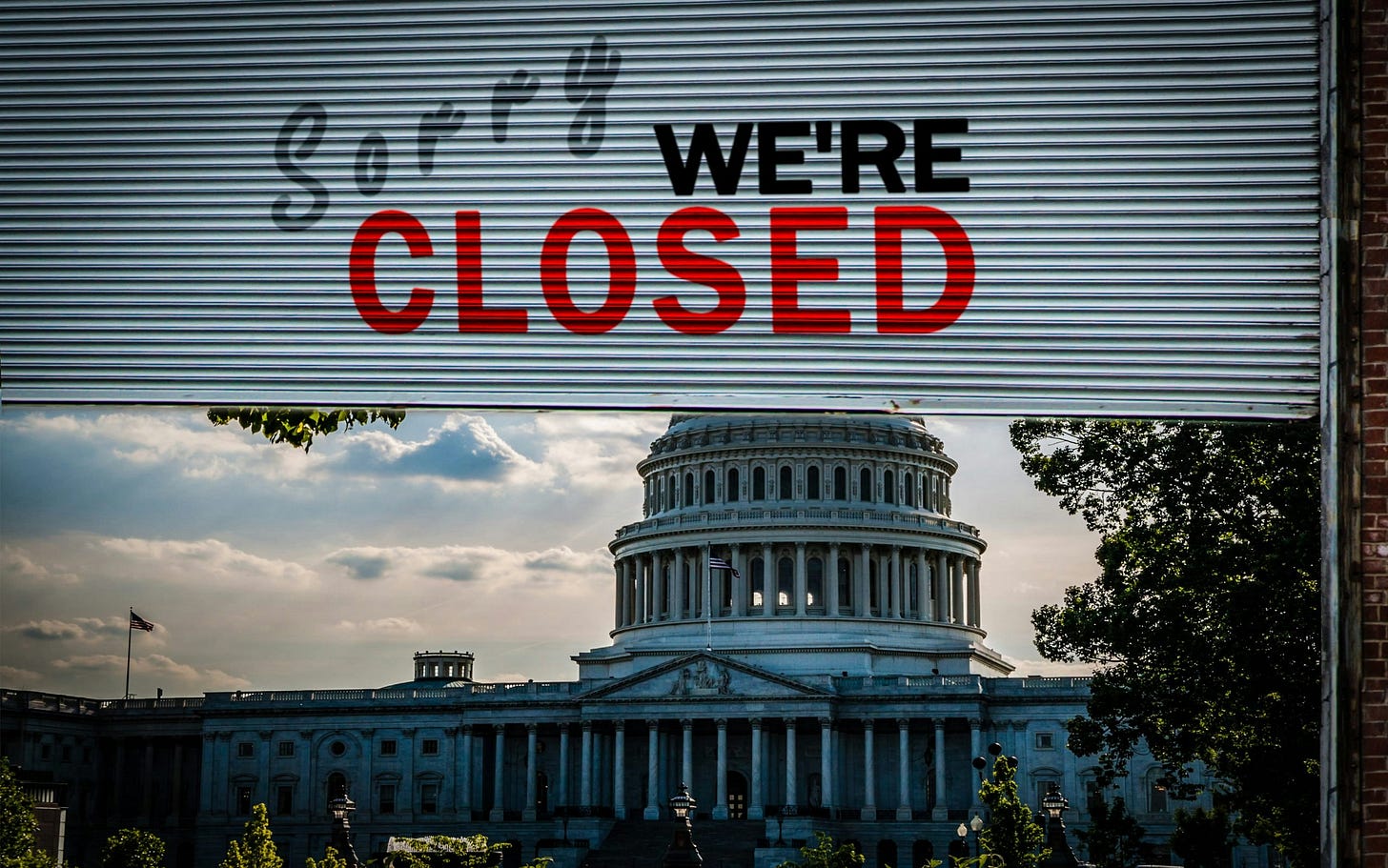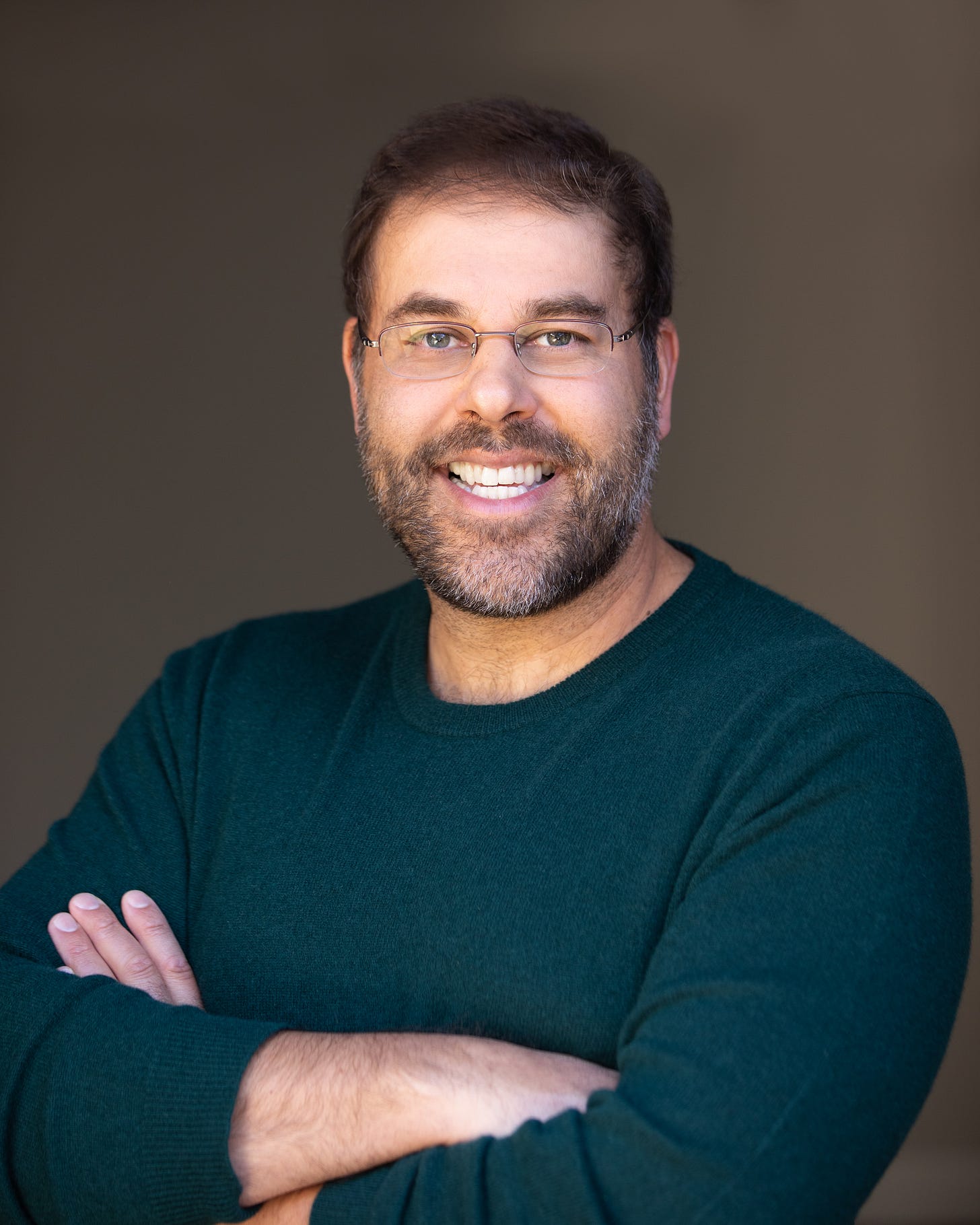Why This Shutdown is Different
A self-inflicted crisis exposes the limits of partisan power and the costs of political fatalism.
By Jeremi Suri
On October 1, the U.S. government shut down because Congress failed to pass, and the president failed to sign, legislation that pays for federal agencies. More than two-thirds of the budget is a combination of “mandatory spending” for programs like Social Security and interest on the growing federal debt. The “discretionary” portion of the budget (about 27%) funds the daily work of the Treasury, Defense Department, State Department, Homeland Security, and others. The “discretionary” portion pays salaries for soldiers, air traffic controllers, food inspectors, ICE agents, and most other federal workers.
Congress and the president failed to fund these vital agencies. Many services, including federal student loan offices and presidential libraries, were forced to close on October 1. Approximately 750,000 federal workers were furloughed until funding is restored. “Essential” federal employees who keep our military, airports, law enforcement, and health systems functioning are now working without pay. They will miss their next paycheck. Furloughed and essential employees will only receive their back pay after Congress and the president restore funding to their agencies.
Closing the wealthiest and most powerful government in the world is a clear sign of dysfunction. This is not the first time, of course. Since 1995, the federal government has shut down eleven times, with the longest closure lasting 35 days during Donald Trump’s first term as president. Shutdowns show that Congress and the White House have been unable to reach basic agreement to keep the lights on.
Shutdowns usually occur when at least one house of Congress and the White House are controlled by different parties. Today, however, the Republicans have a majority in both the House of Representatives and the Senate, and they hold the presidency. From tax cuts to tariffs to questionable confirmations of cabinet officials, Republicans have shown that they are dominating the U.S. government right now. Yet, they cannot manage to fund even the federal employees they claim to admire – soldiers, ICE agents, and others.
With the Republicans in control of Congress, there has been little work on the twelve appropriations bills required for government funding. The stopgap “continuing resolution” that Republicans recently proposed is simply a redo of a similar resolution from March. For six months, they made no progress reaching an agreement on annual funding for Defense, or State, or Homeland Security, or Education, or anything.
That is the Democratic objection to a continuing resolution that does more of the same. Democratic Senators have filibustered any measure that does not address the steep reductions in health care coverage for citizens that will occur if government funding is not negotiated, as it should be, in Congress to craft new legislation. Continuing without legislation will harm more than 100 million Americans who rely on Medicare and the Affordable Care Act for basic health insurance.
There is no easy answer, but this is a problem that Congress and the president are supposed to address when they decide on discretionary government funding levels each year. Republicans promised to address the issue when Democrats accepted the first continuing resolution in March, but Republicans have done little since then. That is the main reason the government has now shut down.
What makes this shutdown different from others is the absence of urgency from the party that controls the White House and Congress. President Trump has proposed no compromise to reopen the government, he has convened no additional meetings since October 1 with congressional leaders, and he has continued to barrel forward with frivolous projects that waste resources and time in this crucial moment, including his proposed “Trump Dollar Coin,” which he has no constitutional authority to create in the first place.
When Trump has spoken about the shutdown, he has threatened to fire federal employees and punish Democratic states with other funding cuts. These bullying statements do not exactly show a commitment to restoring government services. Nor do they show any empathy for the thousands of hard-working government employees who are caught in the middle of this fight. If anything, draconian threats encourage the president’s adversaries to resist what they see as authoritarian tactics. The threats also alienate millions of citizens, including those in Republican states, who need government services.
Discussions about the current shutdown seem fatalistic. Most Republicans want to reopen the government, but they do not think that Trump wants to make any compromises. And they are afraid to push him. Democrats know this is one of the few levers they have to protect basic health coverage for citizens and resist the president’s perceived misuse of his powers. The standoff is not about policy alone; it is about forcing the president to work with Congress, rather than around Congress, to manage federal resources.
I do not expect Trump or the Democrats to back down anytime soon. The stakes are large, and both sides think this fight is unavoidable. That is the danger of fatalism – it discourages compromise. Everyone keeps doing what they have been doing.
During the last ten shutdowns, the damage to the American economy was minimal. Many Americans were inconvenienced, but the temporary loss of government services had few permanent effects. Although soldiers, air traffic controllers, TSA agents, food safety inspectors, and other federal employees worked for days without pay, they were quickly compensated for that time. Furloughed federal workers, too.
This time seems different because the two sides are only likely to move toward compromise when Americans feel the pain of the shutdown. If there is no will to negotiate at the top, the pressure to negotiate must come from below our leaders – from the people. Federal employees will miss their paychecks, businesses will suffer from long waits for government services, transportation will be snarled in delays from absent air traffic controllers and TSA agents, and citizens will learn how their health insurance premiums are ballooning. With each week, these building effects of the shutdown will move citizens to demand a compromise on funding the government. Trump will eventually shift to meet some Democratic demands, but only after many weeks and widespread anger.
This shutdown is different because it will last a long time, harm millions of Americans, and leave our country much weaker than before. Maybe those conditions will finally encourage a change in our politics. It is sad that our best hope is to learn from a government shutdown we initially viewed as unavoidable. Fatalistic thinking is self-fulfilling and often self-destructive.
Also see in:
German, Turkish, Chinese, Spanish
Jeremi Suri holds the Mack Brown Distinguished Chair for Leadership in Global Affairs at the University of Texas at Austin. He is a professor in the University’s Department of History and the LBJ School of Public Affairs. Professor Suri is the author and editor of eleven books on politics and foreign policy, most recently: Civil War By Other Means: America’s Long and Unfinished Fight for Democracy. His other books include: The Impossible Presidency: The Rise and Fall of America’s Highest Office; Liberty’s Surest Guardian: American Nation-Building from the Founders to Obama; Henry Kissinger and the American Century; and Power and Protest: Global Revolution and the Rise of Détente. His writings appear in the New York Times, Washington Post, Wall Street Journal, CNN.com, Atlantic, Newsweek, Time, Wired, Foreign Affairs, Foreign Policy, and other media. Professor Suri is a popular public lecturer and comments frequently on radio and television news. His writing and teaching have received numerous prizes, including the President’s Associates Teaching Excellence Award from the University of Texas and the Pro Bene Meritis Award for Contributions to the Liberal Arts. Professor Suri hosts a weekly podcast, “This is Democracy.”




